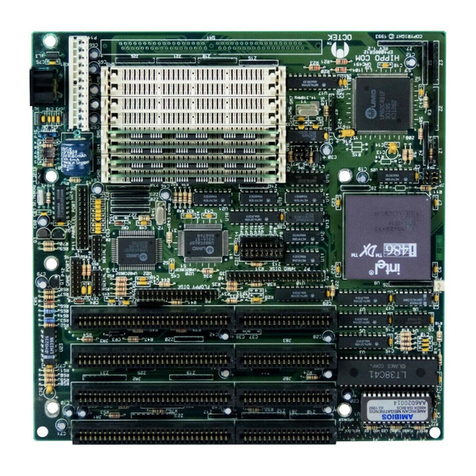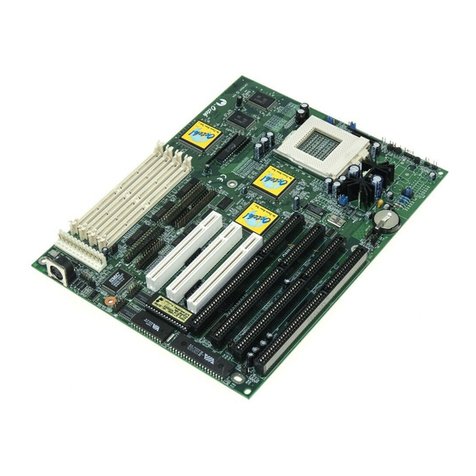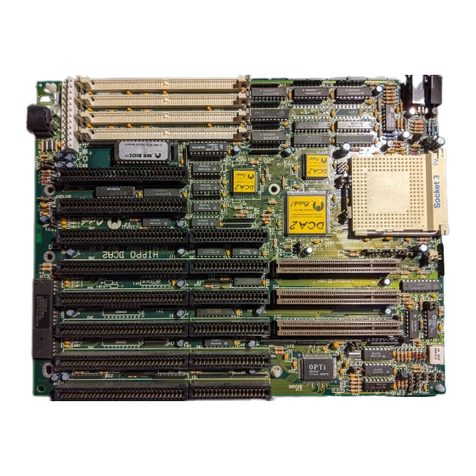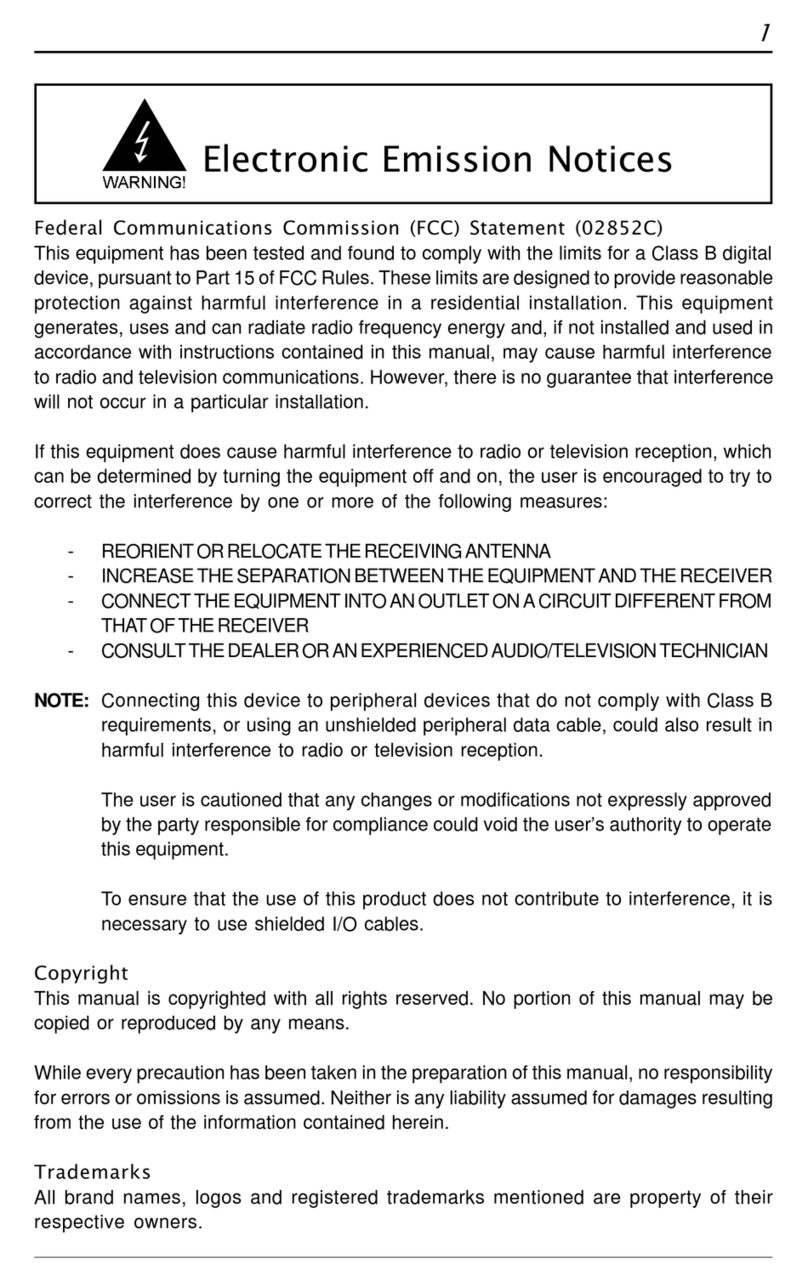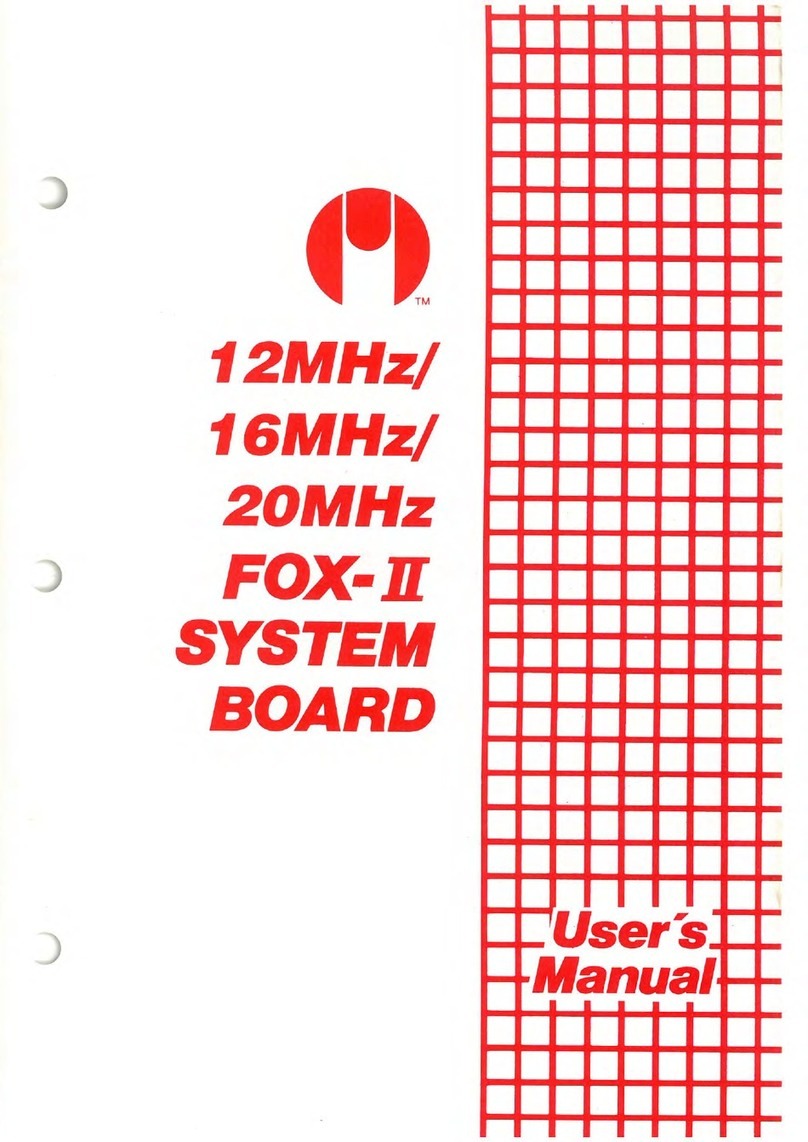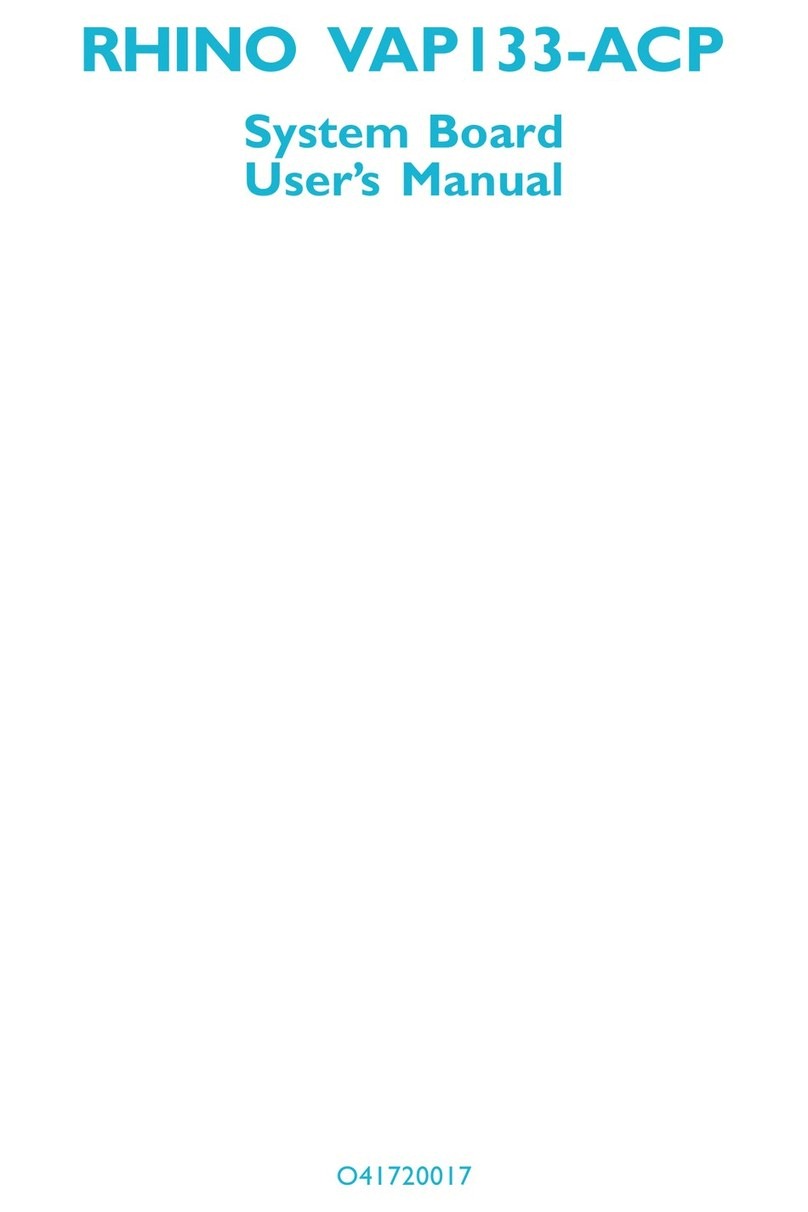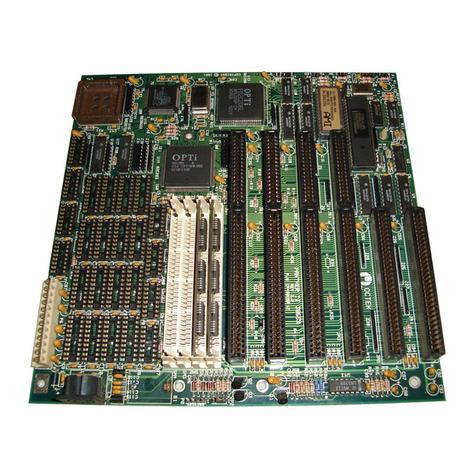
INTRODUCTION
__________________________________
The Panther-II is a fully PC/AT compatible system board
implemented with a highly integrated chip sets to provide high
performance, reliability and compatibility. It is based on the 386SX
CPU which can access the world's largest existing microcomputer
software base, including the growing 32-bit software.
To speed up the switching of CPU between protected and real
mode, a special feature known as 'OS/2 Optimization' is also
incorporated. This provides an unique method to handle the mode
switching which will improve the performance for advanced operating
system and expanded memory manager applications.
Regarding to the issue of compatibility, Panther-II system is
fully hardware and software compatible with associated PC-AT products.
This means that virtually all the hardware and software that is available
for the PC/AT can also be run on a system you build around the
Panther-II system. It supports MS-DOS, Xenix, Unix and all PC/AT
application programs. Users can run applications designed for the
PC/AT on Panther-II without any modification. Multi-tasking and
multi-user capabilities are fully functional on this system board.
In addition, the Panther-II provides standard ISA expansion bus
connectors so that add-on cards developed for the PC/AT will be fully
functional. On-board power good generator is also implemented to
ensure the reliability of the system and is capable of working with any
power supplies.
Panther-II is a perfect choice for CAD/CAM workstation, file
server and end user applications. It is designed for the most advanced
computer-based applications for today and in the future.
